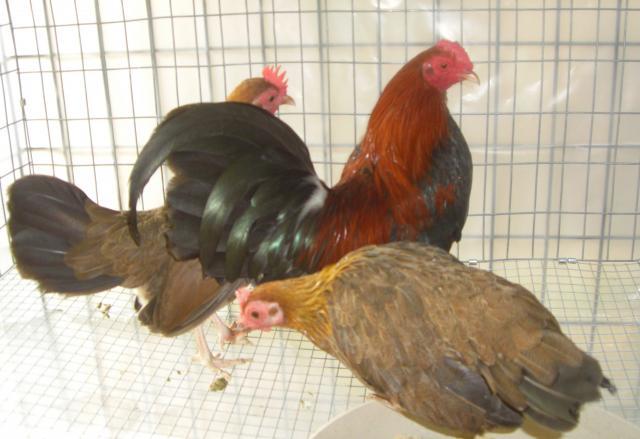Quote:
OK, it would be ver helpfull if you would pick a color I can explain more that way.
But in short,
male line birds. Breed for exhibition males only. The hens / pullets are either breeders or culled they have no other purpose.
Female line birds are bred solely for exhibition hens / pullets and teh males other than breeding have no purpose.
Male Line males are closest to the standard of Perfection in color for the variety and Type.
The females will be larger, longer backed slighty more upright in body carriage with a wider flatter breast.
Wing carriage should be high with wings moderately longer in length that you would like a good hen.
Tail primaries shoud be longer, broader and somewhat disproportional to body size, with top feather being slightly concave and providing the appearance of short male sickle feather.
Female Line: females closest to standard and bred solely for exhibition females
Males are short legged, short backed, very broad and heavy breasted almost pidgeon breasted. Most will have the body size slightly larger than a mature hen, tails will be short, carried high, short sickle and very heavy broad head. Combs should not be dubbed as you want to use males showing less than 1 inch of total comb height, 4 points and a blade. with comb points very evenly placed on the comb.
The above descibes double mated lines, (Male line and Female line). You should never cross the two lines as you will get 100% culls and nothing you will want to be seen.
Single Mated lines are quite common and actually when carefully planned produce fewer culls. from a single mated line you can expect good females and good males from a single brood pen. This is more common with varieties that the male and female are teh same color and pattern, such as all your self colored birds (Black, Blue, white) and birds where the male and female share the same color placement and pattern such as birchen, brown red, columbian. You can single mate duckwing varieties but it is very difficult to get show quality specimens of Parti-colored birds that way.
Hope that explantion helps.
Thank you both for your time on that and yes, it does help! This is what led to my question(that and watching this thread for a while)--I purchased these birds below as a trio and showed this picture on here not long ago. I believe you made the comment that my rooster looked to be a hen line bird. Can you tell from these picture if these are going to be good hens for this rooster and what should I be looking at? I really love the BB Red colors and want to understand what to look for!
I was just looking and you can not see the bays of his wings--not sure if that is important for this subject. I now understand he has a good deal of black in his saddle and wing bows(not sure if all that is correct). He does have short legs....









